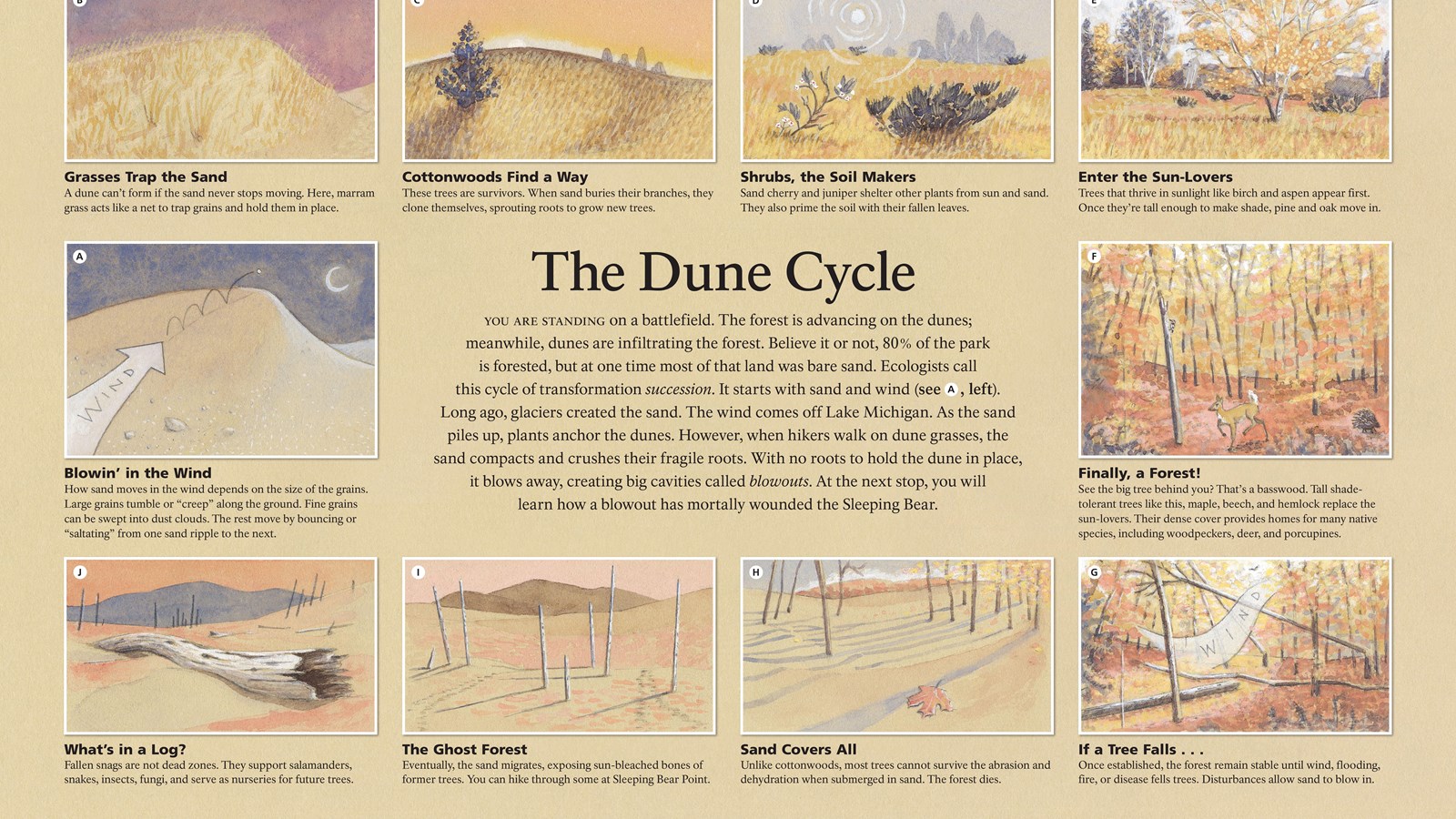Last updated: September 19, 2025
Place
Wayside: Dune Cycle

NPS credit
Historical/Interpretive Information/Exhibits
You are standing on a battlefield. The forest is advancing on the dunes; meanwhile, dunes are infiltrating the forest. Believe it or not, 80% of the park is forested, but at one time most of that land was bare sand. Ecologists call this cycle of transformation "succession."
It starts with sand and wind (left). Long ago, glaciers created the sand; the wind comes from Lake Michigan. As the sand piles up, plants anchor the dunes. However, when hikers walk on dune grasses, the sand compacts and crushes their fragile roots. With no roots to hold the dune in place, it blows away, creating big cavities called "blowouts." At the next stop, you will learn how a blowout has mortally wounded the Sleeping Bear.
1. Blowin' in the Wind
How sand moves in the wind depends on the size of the grains. Large grains tumble or "creep" along the ground. Fine grains can be swept into dust clouds. The other 95% move by bouncing or "saltating" from one sand ripple to the next.
2. Grasses Trap the Sand
A dune can't form if the sand never stops moving. Here, marram grass acts like a net to trap grains and hold them in place.
3. Cottonwoods Find a Way
These trees are survivors. When sand buries their branches, they clone themselves, sprouting roots to grow new trees.
4. Shrubs, the Soil Makers
Juniper and sandcherry shelter other plants from sun and sand. They also prime the area with their fallen leaves.
5. Enter the Sun-Lovers
Trees that thrive in sunlight like birch and aspen appear first. Once they're tall enough to make shade, pine and oak move in.
6. Finally, a Forest!
See the big tree behind you? That's a basswood. Tall shade tolerant trees like this, maple, beech, and hemlock replace the sun-lovers. Their dense cover provides homes for many native species, including woodpeckers, deer, and porcupines.
7. If a Tree Falls...
Once established, the forest remain stable until fire, flooding, wind, or disease fells trees. Disturbances allow sand to blow in.
8. Sand Covers All
Unlike cottonwoods, most trees cannot survive the abrasion and dehydration when submerged in sand. The forest dies.
9. The Ghost Forest
Eventually, the sand migrates, exposing sun-bleached bones of former trees. You can hike through one at Sleeping Bear Point.
10. What's in a Log?
Fallen snags are not dead zones. They support salamanders, snakes, insects, fungi, and serve as nurseries for future trees.
